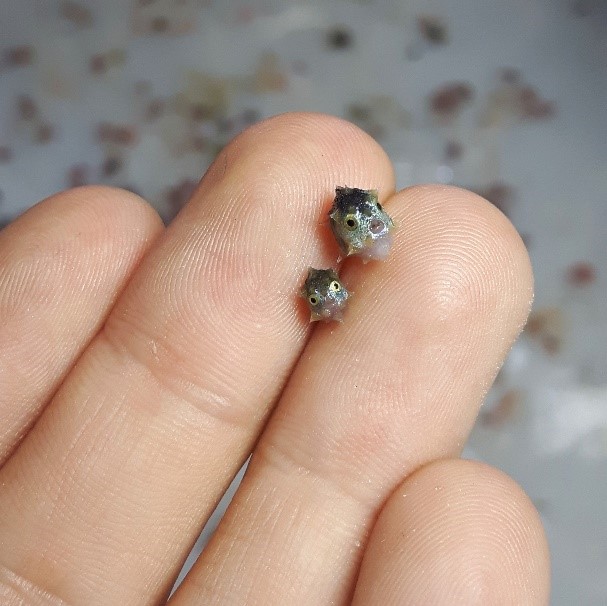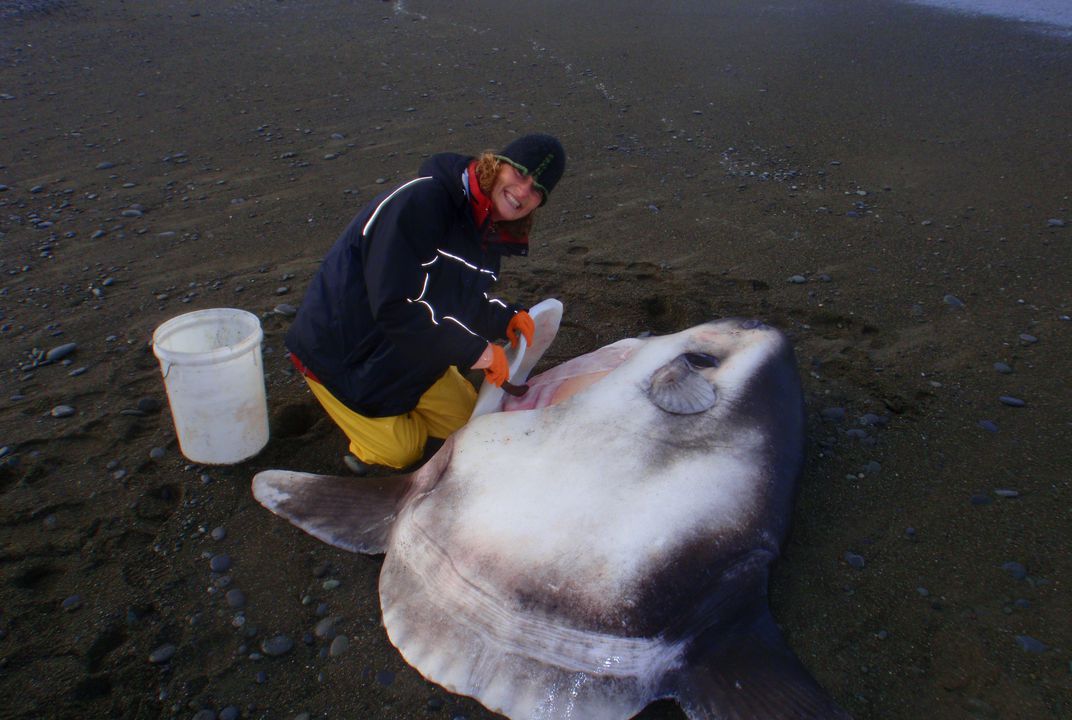Rare baby sunfish reveal early life of one of the ocean’s weirdest fish

Little is known about the early life of sunfish, one of the world’s most bizarre-looking marine animals. And while baby sunfish, or larvae, have been found in small numbers across the world, scientists have, until now, been unable to identify which species the larvae belong to.
Using DNA from sunfish larvae caught off the NSW coast and comparing it to sunfish larvae stored in the Australian Museum collections, scientists found it was a perfect match to the bump-head sunfish (Mola alexandrini) – one of the three known species of Mola.

The scientific journey to this eureka moment has been a long one. “These sunfish larvae were being found by scientists all the way back to 1766, and they were initially described as a completely different species of fish, because they just looked so different from their adult form,” says sunfish expert Marianne Nyegaard, the lead scientist on the discovery.
The larvae also have no recognisable features that would otherwise make it simple to tell a fully developed bump-head sunfish apart from a hoodwinker sunfish. “This is one of the key reasons we’ve never been able to get it to species level. The larvae sampled in Sydney look the same as the ones in the Atlantic [Ocean].”
Another major barrier was that, up until now, no one has been able to do genetic analysis because specimens are so rare. “They’re so valuable so they’re just put away in museum collections,” Marianne says. “I was lucky a friend knew I was looking for Mola larvae.”
The genetic analysis of the sunfish larvae by the Australian Museum’s molecular biologist Andrew King was painstaking, using DNA from a single eyeball to minimise any potential damage.

Scientists now have their hands on 20 sunfish larvae at varying sizes, all sourced from NSW waters, and they hope to piece together their early development from these specimens.
Marianne says this new genetic ID will act as an “anchor” to better understanding what she describes as the “deepsea pokémons” of the ocean. Her goal is to identify the last two species of sunfish larvae so they can all be told apart.
Beyond identification, Marianne still has questions about this stage in a sunfish’s life. “Few Mola larvae are found around the world; where are the larvae? Why don’t we find them more often?
“We don’t really understand where or when they spawn, and how many eggs catch and which ones survive. What habitat are they living in at this stage in their life? These are the things I’m desperate to know.”



